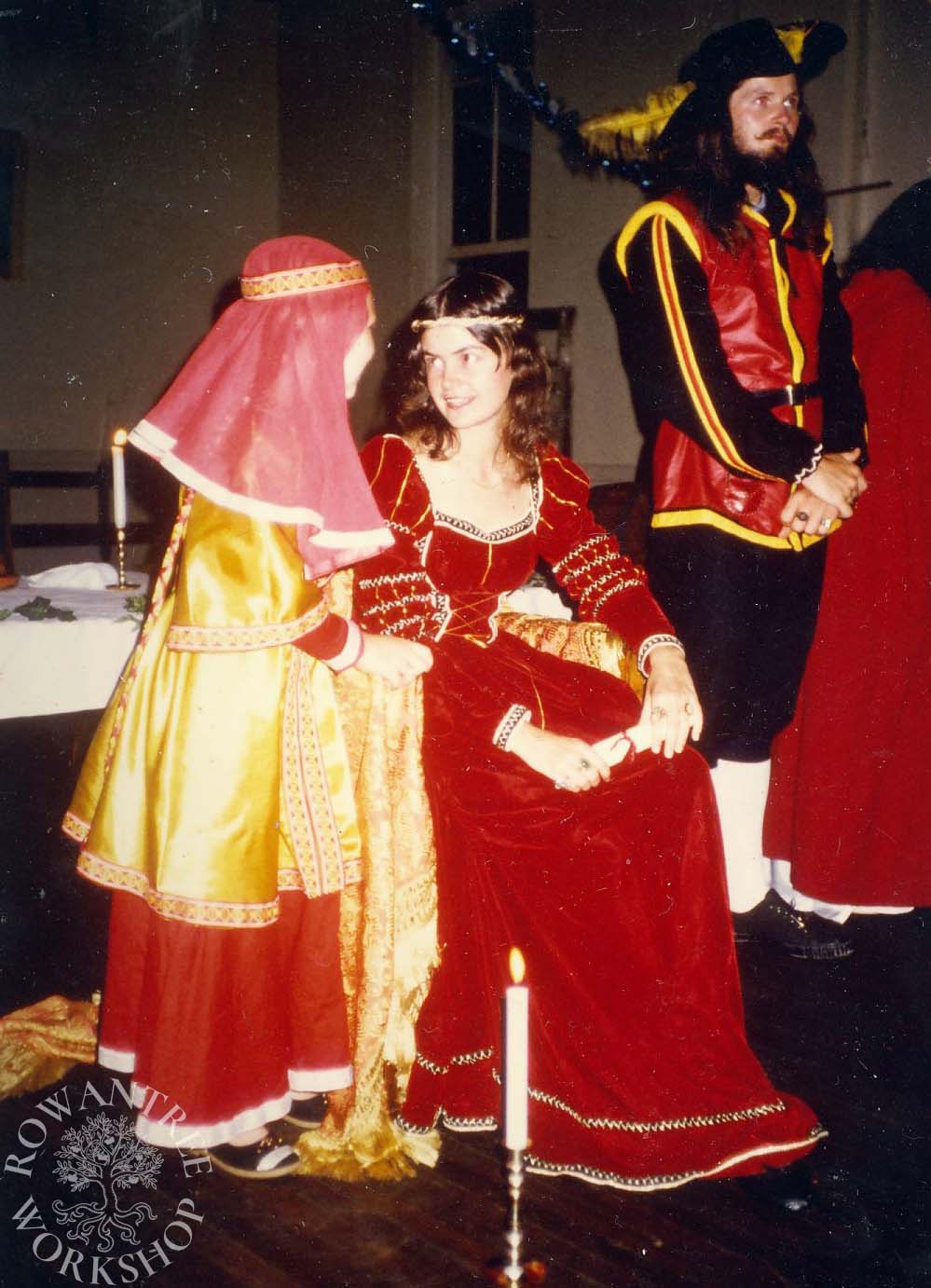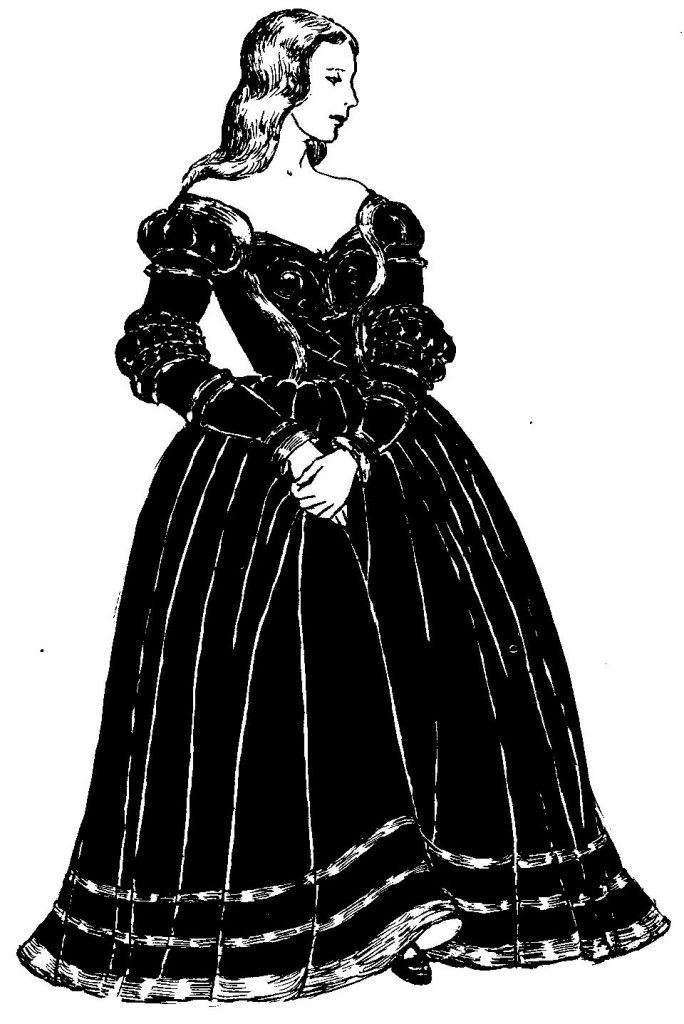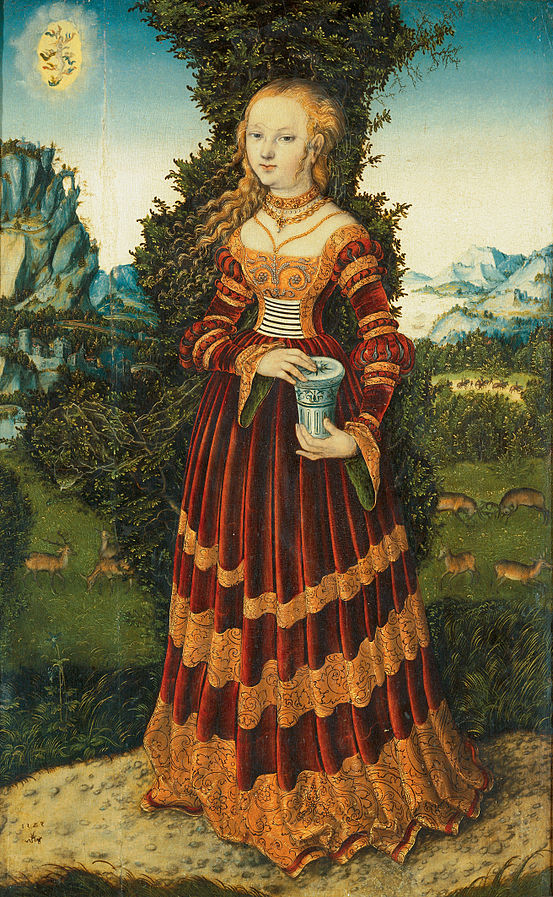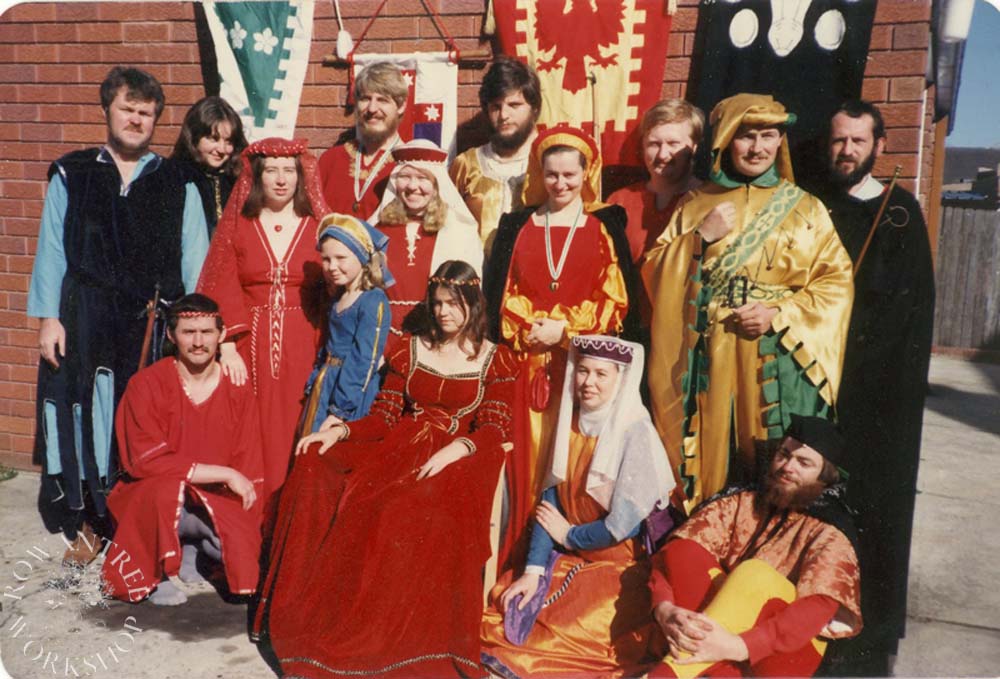Once Upon a Time in 1980, when I was a young student at University, I started a medieval group in Sydney, Australia with a bunch of friends…
18 months later, we decided to hold a big 12th Night feast and started planning fancy outfits. I made my first ever noble German gown. It was full of mistakes, but started my love affair with this style.

Design
By this point, I had made a few medieval outfits – a V necked gown, and some Tudor(ish) kirtles, but I wanted something really special for our big feast. I found a picture in Costume (M Lister, 1967) – one of the few books on medieval costume available in the early 1980s – and fell in love with it.
I had never seen a painting by Lucas Cranach, so I took the image at face value and worked hard to copy every aspect – sweetheart neckline, cross-lacing, lack of body linens and all! I could see no way to get into the gown, so I assumed a back lacing.


Source: Wikimedia
The comparison with an actual Cranach painting of a similar outfit above shows there were so many wrong details, including the date – this style of gown was not in fashion until the mid 1520s.
Construction
The Lister picture did not show any sight of undergarments, so I assumed there were none!
I patterned the gown and worked out the minimum possible fabric required, then saved hard for the red rayon velvet – a major investment of my student funds. I lined the bodice in cotton and the skirt in acetate lining fabric. I was lucky to find a roll of black velvet and gold trim going cheap, which I used for all the contrast lines.
I sewed everything by machine – at the time I saw hand-sewing as inefficient and only used it as a last resort 🙂 I cursed the velvet…
I was thrilled with the result and wore it bursting with pride, despite the melting heat.


Afterword
The medieval group flourished and became the Barony of Rowany within the SCA, and eventually – the Kingdom of Lochac.
A year or so later, I discovered the paintings of Cranach, and realised that Lister’s interpretation was wrong in so many ways. I was SO disappointed. It was a formative lesson in research – to always go back to the original source, rather than rely on someone else’s interpretation.
Luckily, I was able to buy a small amount of matching red velvet. I re-made the bodice with a solid back and open front and re-made the closed sleeves into ones with open slashes. I wanted something really rich for the Brustfleck, so I re-purposed an embroidered Indian handbag which I bought in a charity shop.
I added a petticoat layer to bulk the skirts out – and a fine cotton Hemd (smock). Not perfect, but moving in the right direction (and a lot more comfortable to wear).
I wore the renovated gown for many years, until I lent it to a friend who left a steam iron mark imprinted on the velvet. It is now packed carefully away as a reminder of that time.

